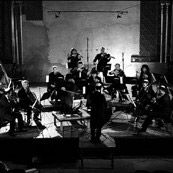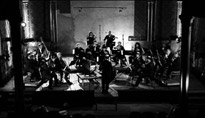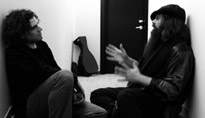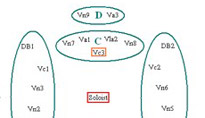jorge a. bosso
musician, composer, cellist
works_orchestra_
משה
MOSHEE
for solo cello and 17 strings
First performance: May 8th 2010, GAIA Festival, Rittersaal Thun Castle, Switzerland
Commissioned by Gavriel Lipkind and LipkindProductions
Gavriel Lipkind, cello
Grazioso Chamber Orchestra of the Hungarian National Philharmonic
Gergely Madaras, conductor
Duration: 25’
Voices
Who Am I
Steps
Every word has its inherent antiquity, its own history : and the consciousness of its path throughout the centuries, projects us towards the future with the awareness of a contemporary distant past. Etymon means, in Greek, what is true. As Greeks considered, that what is true about a word is its origin, the primary moment in which it happens.
In Hebrew heritage is nahalà that comes from nahàl that means river. I find this etymology particularly beautiful and that gives a clear idea of a flow, of an evolution, of a slow but continuous transformation through the time. Parents and sons are in the same flow.
When Gavriel Lipkind asked me to write a concerto, he wished to represent through the sounds, an epic personality from the Jewish ancient times. MOSHEE. In the beginning I was doubtful, because I did not feel sure how to propose it. The assignment was huge and whatever it could be done, it would be never enough to signify the most important moment of the history of the monotheist religion. Finally, I thought that I had to propose the ideas that remained in my head day by day, as anyone of us could put forward, after trying to read between the lines the Holy Book.
Friendship in Latin is amicitia. That comes from anima custos, that means who takes care of your soul. I confer to him through MOSHEE part of mine, and through his art he will endeavour to give his testimony of the truth, of his Truth of the world. The Truth revealed through the Beauty, and the Beauty as a symbol of Truth.
I proposed Gavriel another setting of the strings. I wanted the orchestra to embrace the soloist, and through this concept appeared the idea of setting the strings with the design of the star of David. If you could see from upwards the stage, you could observe the defined limits of the Magen David hexagram, the star, the shield, that is shaped from every point of the ensemble.
“ This God...he is a shield for all those who take refuge in him. “ ( Psalm 18, v. 30)
Acoustically it offers many possibilities, different from those that the usual position of the strings does. The whole composition is one large gesture divided in three movements. The central one called Who am I? is embraced by those who represents the plurality, the Voices and the Steps. For the translation into sounds of this plurality, I found necessary this setting of the string orchestra. And I found the expression in a very close relation with its manifestation.
As regards the conception of the musical language, I took it from the idea of the Magen David itself. I created different modes that are combined through the geometrical idea of the six-pointed star figure. These modes, formed through the combination of the tropes from the traditional singing of the Torah in the synagogue. Many rhythmical cells of the concerto have an Arabian origin, flowing patterns that have been adopted by the Jewish poetry.
Below, you can read the notes Gavriel Lipkind wrote for the sitting parts assignment I decided for MOSHEE.
There are four groups of players, described from the point of view of the audience as follows:
Group A:
A quintet on the right side of the stage (on my right-hand side), led by the concertmaster of the orchestra. The quintet includes the following parts: Vn1, Vn2, Vn3, Vc1, Kontrabass1.
It means that the concertmaster plays the Vn1 part.
Group B:
Another quintet - that includes the following parts: Vn4, Vn5, Vn6, Vc2, Kontrabass2
This quintet is quintet on the left side of the stage (on my left-hand side), led by the concertmaster of the second violins of the orchestra (meaning that the violinist who usually leads the second violins should play Vn 4 and lead the second quintet).
Both groups A and B sit in a sort of a line where the leading violinist is the closest to the audience followed by the other violinist, the cellist and the Double bass the farthest and a bit outside.
There are no violas in group A and B.
Group C:
A third quintet that is situated behind the soloist.
This quintet consists of Two violins, Two violas, and a leading cello.
The cello is the middle of the quintet (exactly behind the soloist), on his sides are the two violists (Viola1 on the left and Viola2 on the right), and on their sides are the two violinist (Vn7 left and Vn 8 right).
This group is led by the cellist and therefore, the usual cello concertmaster of the orchestra should play this part.
Group D:
Behind Group C there are two more players: Violin9 on the left and Viola3 on the right.
Table: ASSIGNMENT OF PARTS
| Usual position in the orchestra | Part in MOSHEE |
| Concertmaster | Vn1 (leading Group A) |
| Second player of first violin section | Vn2 (Group A) |
| Third player of first violin section | Vn3 (Group A) |
| Second player of the cello section | Vc1 (Group A) |
| Double bass 1 | DB1 (Group A) |
| Leader of second violins section | Vn4 (leading Group B) |
Second player of second violin section |
Vn5 (Group B) |
| Third player of second violin section | Vn6 (Group B) |
| Third player of the cello section | Vc2 (Group B) |
| Double bass 2 | DB2 (Group B) |
Leader of cello section |
Vc3 (leading Group C) |
| Second and third players of the viola section | Va1 & Va2 (Group C) |
| Fourth players of first violins and second violins sections | Vn7 & Vn8 (Group C) |
| Leader of the viola Section | Va3 (Group D) |
| Fifth player of first violins | Vn9 (Group D) |




